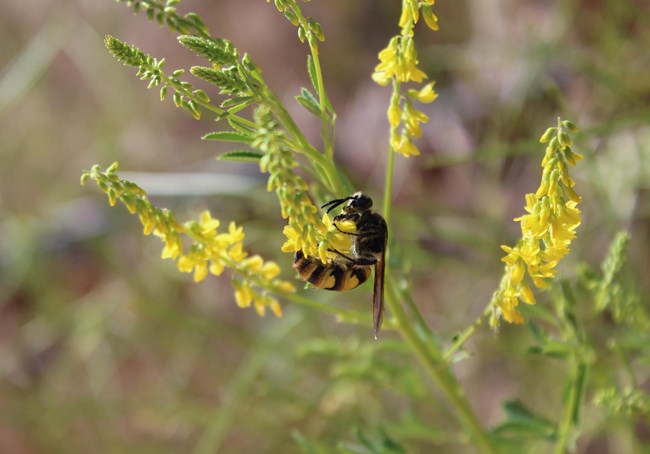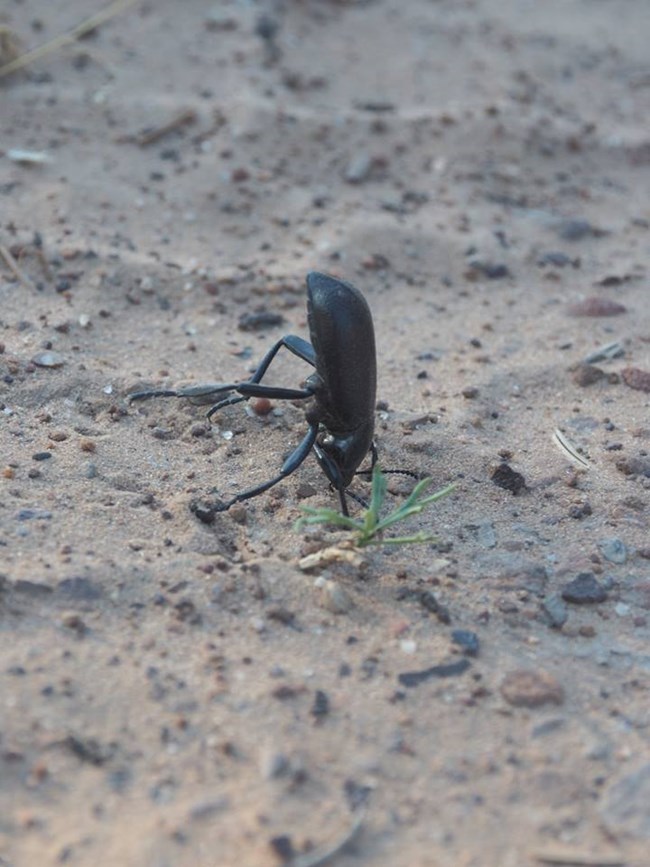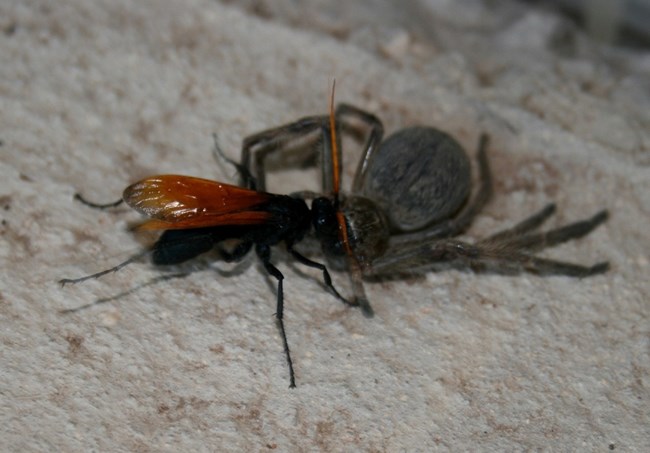
NPS Photo What is an insect?Insects are a class of invertebrates that possess similar features. Every insect has a head, a thorax and an abdomen. The head includes eyes, antennae, and mouth. The thorax is the middle body segment and includes wings and six jointed legs. The abdominal area includes the heart, digestive tract, and reproductive organs. These features differentiate them from arachnids, the family that contains spiders and scorpions. Arachnids have only two body parts and eight legs. 
NPS Photo/Kobinsky Darkling BeetleThe darkling beetle is the common name of the large family of beetles Tenebrionidae. It ranges from southern British Columbia to northern Mexico and east to Texas, Kansas and Wyoming. The diet of the darkling beetle includes dead plant and animal material, roots, and seeds. These flightless, mid-sized beetles are usually colored blackish, dark brown or gray, and often have a satiny sheen. The larvae of darkling beetles are an important food source for certain invertebrates and small mammals. Adults have slow metabolisms, and live long lives compared to other insects, ranging from approximately six months to two years. When threatened, they will thrust their abdomen into the air and release a noxious chemical. 
NPS Photo Tarantula Hawk WaspThe tarantula hawk is one of the largest parasitic wasps, using their sting to paralyze their prey before dragging it to a brood nest as living food. The female tarantula hawk wasp stings tarantulas between the legs, paralyzing it, then drags the prey to a specially prepared burrow. There, a single egg is laid on the spider's abdomen and the entrance is covered. When the wasp larva hatches, it creates a small hole in the spider's abdomen to enter and feed, avoiding vital organs for as long as possible in order to keep the spider alive. Once the wasp becomes an adult, it emerges from the spider's abdomen. Adult tarantula hawks feed on nectar. While they are not very aggressive, their sting is extraordinarily painful. In 1989, New Mexico designated the tarantula hawk wasp to be its official state insect. |
Last updated: May 6, 2025
